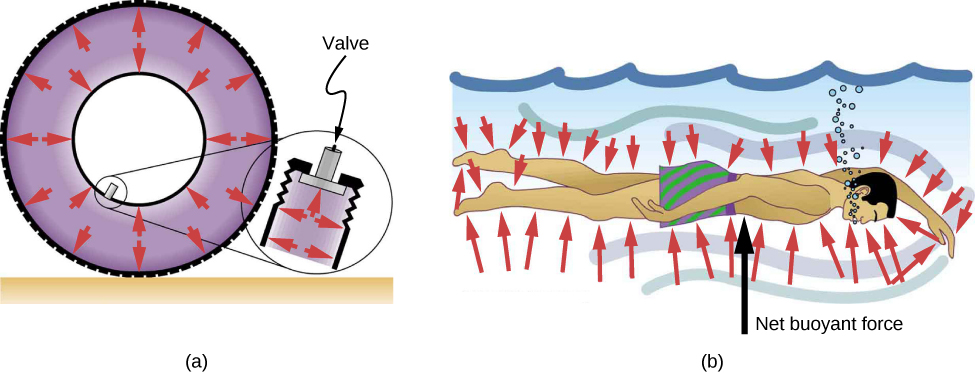| << Chapter < Page | Chapter >> Page > |
where is Boltzmann’s constant, which has a value of .
You may have encountered the ideal gas law in the form , where n is the number of moles and R is the gas constant. Here, the same law has been written in a different form, using the density instead of volume V . Therefore, if pressure p changes with height, so does the density Using density from the ideal gas law, the rate of variation of pressure with height is given as
where constant quantities have been collected inside the parentheses. Replacing these constants with a single symbol the equation looks much simpler:
This gives the solution
Thus, atmospheric pressure drops exponentially with height, since the y -axis is pointed up from the ground and y has positive values in the atmosphere above sea level. The pressure drops by a factor of when the height is which gives us a physical interpretation for : The constant is a length scale that characterizes how pressure varies with height and is often referred to as the pressure scale height.
We can obtain an approximate value of by using the mass of a nitrogen molecule as a proxy for an air molecule. At temperature or 300 K, we find
Therefore, for every 8800 meters, the air pressure drops by a factor 1/ e , or approximately one-third of its value. This gives us only a rough estimate of the actual situation, since we have assumed both a constant temperature and a constant g over such great distances from Earth, neither of which is correct in reality.
Fluid pressure has no direction, being a scalar quantity, whereas the forces due to pressure have well-defined directions: They are always exerted perpendicular to any surface. The reason is that fluids cannot withstand or exert shearing forces. Thus, in a static fluid enclosed in a tank, the force exerted on the walls of the tank is exerted perpendicular to the inside surface. Likewise, pressure is exerted perpendicular to the surfaces of any object within the fluid. [link] illustrates the pressure exerted by air on the walls of a tire and by water on the body of a swimmer.


Notification Switch
Would you like to follow the 'University physics volume 1' conversation and receive update notifications?